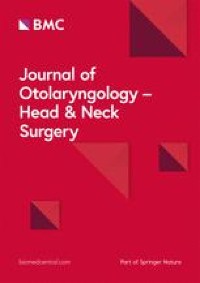|
Αρχειοθήκη ιστολογίου
-
►
2023
(256)
- ► Φεβρουαρίου (140)
- ► Ιανουαρίου (116)
-
▼
2022
(1695)
- ► Δεκεμβρίου (78)
- ► Σεπτεμβρίου (142)
-
▼
Μαρτίου
(173)
-
▼
Μαρ 22
(6)
- ROBOTIC REPAIR OF ATRIAL SEPTAL DEFECT WITH PARTIA...
- The effectiveness of topical 1% lidocaine with sys...
- Comparison of Video Head Impulse Test Findings in ...
- The outcome of tympanic membrane grafting medial o...
- Injection laryngoplasty during transoral laser mic...
- Evolution of midface microvascular reconstruction:...
-
▼
Μαρ 22
(6)
- ► Φεβρουαρίου (155)
-
►
2021
(5507)
- ► Δεκεμβρίου (139)
- ► Σεπτεμβρίου (333)
- ► Φεβρουαρίου (628)
-
►
2020
(1810)
- ► Δεκεμβρίου (544)
- ► Σεπτεμβρίου (32)
- ► Φεβρουαρίου (28)
-
►
2019
(7684)
- ► Δεκεμβρίου (18)
- ► Σεπτεμβρίου (53)
- ► Φεβρουαρίου (2841)
- ► Ιανουαρίου (2803)
-
►
2018
(31838)
- ► Δεκεμβρίου (2810)
- ► Σεπτεμβρίου (2870)
- ► Φεβρουαρίου (2420)
- ► Ιανουαρίου (2395)
-
►
2017
(31987)
- ► Δεκεμβρίου (2460)
- ► Σεπτεμβρίου (2605)
- ► Φεβρουαρίου (2785)
- ► Ιανουαρίου (2830)
-
►
2016
(5308)
- ► Δεκεμβρίου (2118)
- ► Σεπτεμβρίου (877)
- ► Φεβρουαρίου (41)
- ► Ιανουαρίου (39)
Τρίτη 22 Μαρτίου 2022
ROBOTIC REPAIR OF ATRIAL SEPTAL DEFECT WITH PARTIAL PULMONARY VENOUS RETURN ANOMALY: OUR 5‐YEAR EXPERIENCE
The effectiveness of topical 1% lidocaine with systemic oral analgesics for ear pain with acute otitis media
|
Comparison of Video Head Impulse Test Findings in Individuals Aged between 20–39 and 40–60 Years
|
The outcome of tympanic membrane grafting medial or lateral to malleus handle in type I underlay tympanoplasty
|
Injection laryngoplasty during transoral laser microsurgery for early glottic cancer: a randomized controlled trial
|
Evolution of midface microvascular reconstruction: three decades of experience from a single institution
|




